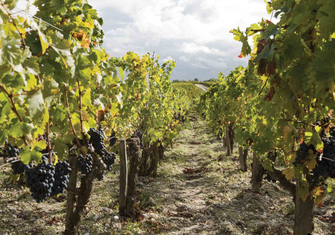
There seems to be some divergence of opinion about the precise quality of the 2015 Bordeaux vintage among critics who went out for the primeur tastings. Farr Vintners, the Battersea-based house, raved that the 2015s rank alongside 2010, 2009, 2005 and 2000 as the best vintages since 1990, while respected independent merchant, Haynes Hanson & Clark noted rather drily that 2015 is merely a ‘good’ vintage with some exceptional wines.
James Suckling, however, says that many chateaux’s 2015s may be the best they have ever made. Although he is renowned for being a high marker, his scores are generally higher than for any other vintage that he has scored since becoming Wine Spectator’s judge in 1982. Bancrofts, the Bermondsey-based outfit, opined that 2015 is a ‘very good to excellent’ vintage. “It is not completely homogenous but good in all the major appellations with only a few of the St Julien wines not quite coming up to scratch,” they added.
The likes of HHC and Bancrofts are not really going to have any great impact on the market and prices, but Suckling and Farr Vintners should do. The latter shift a huge amount of stock at the most competitive prices, while Wine Spectator’s influence may well increase now that Robert Parker has given his Bordeaux baton to Neal Martin. Rather than argue that HHC and Bancroft have understated the quality of 2015, I thought readers would like to know what Denis Dubourdieu, the renowned Bordeaux-based wine consultant, thinks of 2015. Technical knowledge of a vintage is always extremely useful – more so in my view than much of the waffle that many merchants come up with.
Put simply, Dubourdieu concludes that all five conditions necessary for a great red wine vintage in Bordeaux were perfectly met. “These are important to remember,” he said, “because they determine what constitutes a ‘perfect’ vintage in Bordeaux – which does not happen more than once a decade. The last such year was in 2005.”
The five conditions are as follows:
1&2) Flowering and fruit set that are early, even, and homogeneous during fine, dry weather.
3) The gradual onset of water stress thanks to a warm, dry month of July in order to slow down and then put a definitive stop to vine growth during veraison (colour change).
4) Full ripening of the various grape varieties thanks to dry and warm (but not excessively) weather in the months of August and September.
5) Fine (dry and medium-warm) weather during the harvest, making it possible to pick at optimum ripeness without running the risk of dilution or rot.
This is Dubourdieu’s assessment of how the conditions were met:
1&2)The average maximum temperature in March was 14.5°C, compared to the norm of 15.1. Bud break only began in mid-April, i.e. fifteen days later than in 2014, but 10 days ahead of the ten-year average. Most of our comparisons are established using the 2005 and 2010 vintages (judged excellent at the time, as they are today) as references. May was warm, dry and sunny. Flowering took place during the first few days of June, on the 4th for Merlot and the 6th for Cabernet. This was very even, homogeneous, and over in less than a week. Fruit set was similarly as quick as flowering. The month of June was warm, with an average maximum temperature of 27.3 °C. It was also dry, with just 43.8 mm of rain, as well as exceptionally sunny, with 301 hours of sunshine. These figures are comparable to 2005 (max temp28.1 °C, 32.5 mm of precipitation, and 270 hours of sunshine). There was just 50 mm of rain spread over 4 days once flowering was over and fruit set had started. This short wet period was conducive to increased berry size. Thus, at this stage, the first two conditions for a great red wine vintage in Bordeaux were perfectly satisfied.
3)Late July, like the whole month, was very hot and dry, which halted vine growth. Water stress arrived at just the right time. Mid-véraison (colour change) was observed on the 4th of August. 90% of véraison was finished by the 10th of that month. Only young vines on shallow soils showed any sign of suffering from the drought conditions. Therefore, the third condition for a great red wine vintage in Bordeaux was perfectly met in 2015.
4) Conditions were unfavourable to renewed vegetative growth after véraison. The duration of sunshine in July, August, and September was close to seasonal norms. The weather was exceptionally dry from July to September in 2010, as it was in 2005, with slightly above more rainfall in September (56 mm), but much less than the seasonal average (84 mm). August 2015, on the other hand, was relatively wet (89 mm). However, vegetative growth did not start up again – a sign that water reserves were extremely low. Other than St.Estephe, with 118mm of rain compared to the usual 35, September 2015 was dry, but not excessively hot. Furthermore, the maximum temperature did not go above 30C even one day during that month. Therefore, the fourth condition for a great red year in Bordeaux was once again met in 2015.
5) The picking of red wine grapes began with Merlot on the 15th of September and lasted a dozen days. Harvesting of the early-ripening Cabernet grapes overlapped with that of Merlot. Picking for all varieties ended on the 10th of October during fine weather. Obviously, the fifth and final condition for a great red vintage in Bordeaux was once again satisfied in 2015.
Dubourdieu concludes: “In short, the 2015 harvest was very successful for all grape varieties and all colours. The dry white wines are tremendous – fruity, concentrated, and more round than the 2014s. The sweet white wines are sumptuous – focused, pure, fresh, rich, and elegant. The red wines are delicious. They possess the charm and inimitable grace of great Bordeaux.”

